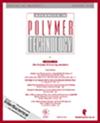引入氧化石墨烯协同改善环氧树脂和CFRP复合材料的力学性能和界面性能
IF 2
4区 工程技术
Q3 ENGINEERING, CHEMICAL
引用次数: 1
摘要
在这项研究中,氧化石墨烯(GO)被用作纳米级增强材料,用于开发高性能碳纤维增强塑料(CFRP)复合材料。首先,在环氧树脂中加入不同重量比例的氧化石墨烯,从0.05到0.6 wt.%。然后以改性环氧树脂为原料,采用缠绕和压缩成型工艺制备了单向CFRP复合材料。优化后的GO- cfrp复合材料氧化石墨烯含量为0.1 wt。复合材料的抗拉强度为2756 MPa,单丝界面抗剪强度为29.06 MPa,分别比原始CFRP复合材料提高了14.4%和12.5%。为了直观地观察CFRP复合材料的断裂过程,采用了数字图像相关系统。验证了适量添加氧化石墨烯可以改善CFRP复合材料变形过程中的应力集中。此外,通过对改性环氧树脂与CFRP复合材料的断口形貌分析,探讨了改性环氧树脂与CFRP复合材料的增强机理。结果表明,氧化石墨烯可以使裂纹随环氧树脂的偏转或分叉,从而协同提高氧化石墨烯改性CFRP复合材料的力学性能和界面性能。本文章由计算机程序翻译,如有差异,请以英文原文为准。
Synergistically Improving Mechanical and Interfacial Properties of Epoxy Resin and CFRP Composites by Introducing Graphene Oxide
In this study, graphene oxide (GO) was employed as nanoscale reinforcement for the development of high-performance carbon fiber reinforced plastic (CFRP) composites. Initially, epoxy resin was modified by incorporating GO with different weight proportion from 0.05 to 0.6 wt.%. Then the unidirectional CFRP composites were prepared with the modified epoxy resin by winding and compression molding technique. The optimized GO-CFRP composites with GO content of 0.1 wt.% present tensile strength of 2756 MPa and monofilament interfacial shear strength of 29.06 MPa, respectively, which are 14.4% and 12.5% higher than the corresponding values of the pristine CFRP composites. To intuitively observe the fracture process of the CFRP composites, the digital image correlation system was employed. It is verified that the moderate addition of GO can improve the stress concentration of the CFRP composites during the deformation process. In addition, the reinforcing mechanism is investigated by analyzing the fracture surface of the modified epoxy resin and the CFRP composites. The results indicate that GO can make the cracks deflect or bifurcate along with the epoxy resin which closes to graphene, resulting in synergistically improved mechanical and interfacial properties of the GO-modified CFRP composites.
求助全文
通过发布文献求助,成功后即可免费获取论文全文。
去求助
来源期刊

Advances in Polymer Technology
工程技术-高分子科学
CiteScore
5.50
自引率
0.00%
发文量
70
审稿时长
9 months
期刊介绍:
Advances in Polymer Technology publishes articles reporting important developments in polymeric materials, their manufacture and processing, and polymer product design, as well as those considering the economic and environmental impacts of polymer technology. The journal primarily caters to researchers, technologists, engineers, consultants, and production personnel.
 求助内容:
求助内容: 应助结果提醒方式:
应助结果提醒方式:


